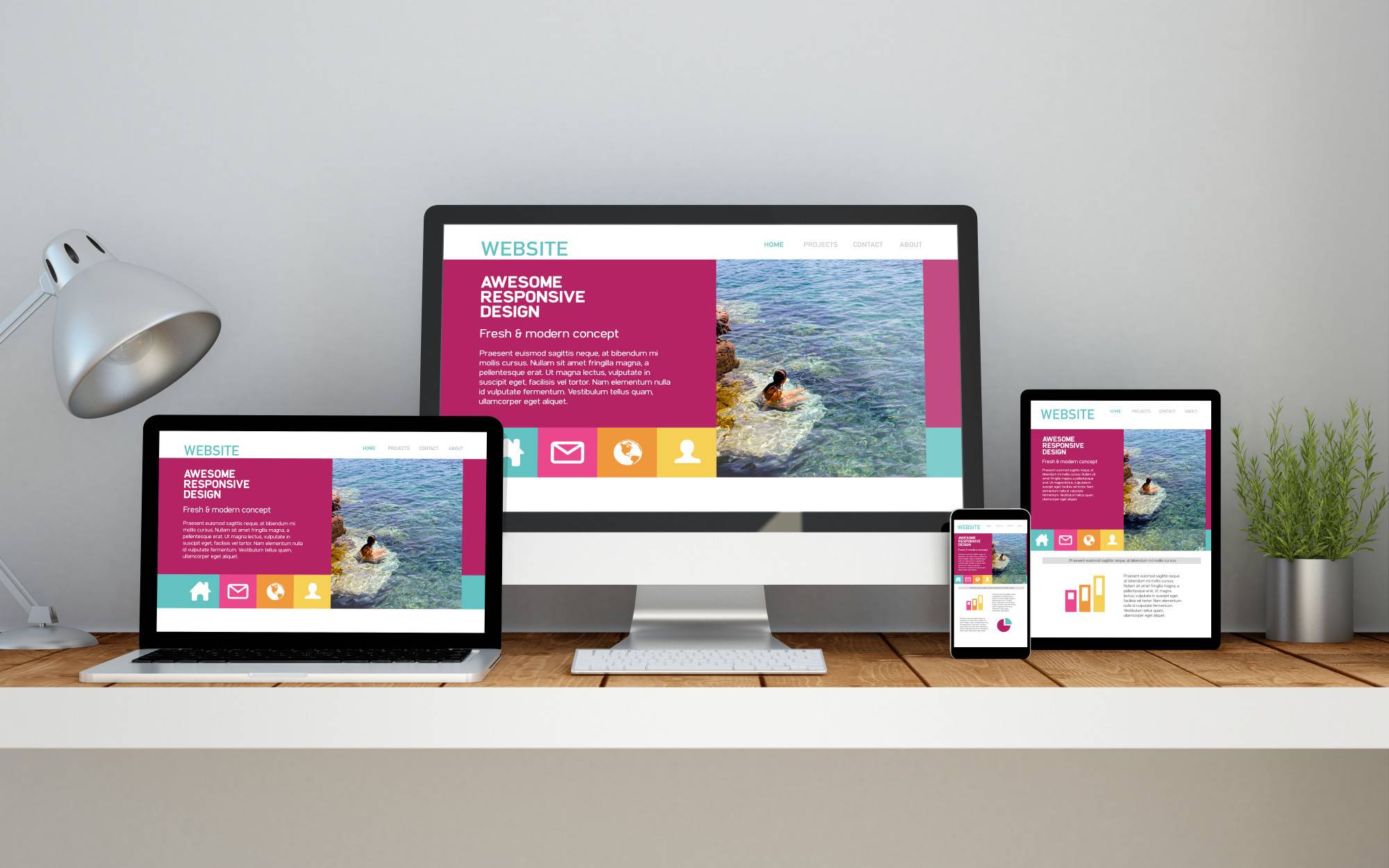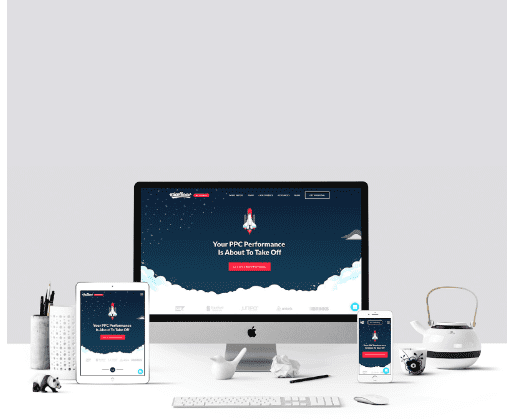Table of Contents
ToggleWhy is a SaaS Website Redesign Crucial for Business Growth?
A SaaS website redesign is crucial for business growth because it can significantly impact user engagement, lead generation, and conversion rates. A well-designed website can be a significant obstacle for users trying to navigate and understand the features and benefits of your software.
By contrast, a well-designed SaaS website can make it easy for users to understand the value of your software and how it can solve their problems. Studies show that a well-designed website can improve user engagement and conversion rates by up to 400%.
Furthermore, a SaaS website redesign can help you stay competitive in a rapidly evolving industry. As technology and user expectations change, your website must keep pace to remain relevant.
Redesigning your website can also allow you to incorporate new features, technologies, and design trends to enhance user experience and differentiate your brand from competitors.
Ultimately, a SaaS website redesign is an investment in the future growth of your business. A well-designed website can help you acquire new customers, increase revenue, and build a more substantial brand presence in your industry by improving user engagement, lead generation, and conversion rates.

The Importance of a Responsive Website Design
A responsive website design is crucial for any business today because it ensures that your website is accessible and optimized for all devices, including desktops, laptops, tablets, and smartphones. With mobile usage on the rise and more users accessing websites on their mobile devices, having a responsive website is no longer an option but a necessity.
Having a responsive website design offers several benefits.
- First and foremost, it provides a better user experience by adapting to the user’s device. This means that users can easily navigate your website, read your content, and interact with your site without having to pinch and zoom or scroll horizontally.
- Secondly, a responsive website design can help improve your search engine rankings. In 2015, Google announced that mobile-friendly websites would be given priority in search results, making responsive design a critical factor for SEO. With a responsive website, you only need to maintain one version of your site, which makes it easier to manage your content and optimize your site for search engines.
- Finally, a responsive website design can also help you save time and money. Having a single website that works on all devices means you don’t need to create separate websites or apps for mobile devices, which can be expensive and time-consuming to develop and maintain.
In today’s digital landscape, responsive website design is essential for any business that wants to provide a great user experience, improve search engine rankings, and save time and money.
The advantage of having a responsive website design for user experience
A responsive website design is advantageous for user experience because it ensures that your website looks and functions well on all devices, providing a consistent and seamless experience for your users. Here are some specific advantages of having a responsive website design for user experience:
- Improved accessibility: A responsive website design makes your site accessible to users on any device, regardless of the screen size or resolution. This means that your site is available to a broader range of users, including those who use mobile devices to access the internet.
- Consistent user experience: A responsive website design ensures your website looks and functions consistently across all devices. This means that users don’t have to adjust to a different interface or layout when they switch between devices, which can improve their overall user experience.
- Faster page loading: Responsive website designs are optimized for faster page loading times, especially on mobile devices. This is because responsive designs use modern coding techniques that prioritize content loading based on device capabilities, resulting in faster load times and better user experience.
- Improved engagement: A responsive website design can help improve user engagement by making it easy for users to access and interact with your content. With a responsive design, users can easily navigate your site, find what they’re looking for, and engage with your content without zooming in or out, which can be frustrating.
A responsive website design can improve user experience by making your site more accessible, consistent, and engaging across all devices. This can attract and retain more users, increase engagement, and drive business growth.

The significance of mobile responsiveness in SaaS websites
Mobile responsiveness is of significant importance in SaaS websites for several reasons.
- First, mobile usage has surpassed desktop usage, with over half of all website traffic coming from mobile devices. If your SaaS website is not mobile-responsive, you risk losing potential customers accessing it on mobile devices.
- Secondly, a mobile-responsive SaaS website provides a better user experience for your visitors. A responsive design ensures that your website adapts to the device’s screen size, making it easy to navigate, read and interact with your website. This can increase engagement, reduce bounce rates and ultimately drive more conversions.
- Thirdly, having a mobile-responsive SaaS website is essential for SEO. If your SaaS website is mobile-responsive, you can maintain visibility in search results and retain potential customers to your competitors. In 2015, Google announced that mobile-responsive websites would be given priority in search results.
- Finally, having a mobile-responsive SaaS website can help to improve your brand image and credibility. A website that looks and functions well on mobile devices shows that you are committed to providing a good user experience for all visitors, regardless of their device. This helps build trust and credibility with your audience, which is essential for building long-term customer relationships.
Mobile responsiveness is essential in SaaS websites as it can help improve user experience, increase engagement, improve SEO, and build brand image and credibility. By investing in a mobile-responsive design, you can ensure that your SaaS website is accessible to all users and provide a better user experience, ultimately driving more conversions and business growth.
Benefits of a responsive website design in terms of SEO
A responsive website design provides several benefits in terms of SEO (search engine optimization). Here are some of the most significant benefits:
- Improved user experience: A responsive website design ensures your website is accessible and easy to navigate on all devices, including desktops, laptops, tablets, and smartphones. This can improve user experience, reduce bounce rates, and increase engagement, all positive signals for search engines.
- Reduced duplicate content: With a responsive website design, you only need to maintain one version of your site, which makes it easier to manage your content and reduces the risk of duplicate content. Duplicate content can hurt your SEO rankings, as search engines may penalize your site for having the same content on multiple pages.
- Increased mobile-friendliness: A responsive website design is mobile-friendly, which is critical for SEO since Google announced in 2015 that mobile-friendly websites would be given priority in search results. A mobile-friendly site can improve your chances of ranking higher in search results and attract more traffic to your website.
- Faster page loading times: A responsive website design is optimized for faster page loading times, especially on mobile devices. This is because responsive designs use modern coding techniques that prioritize content loading based on device capabilities, resulting in faster load times and better SEO performance.
- Improved link building: With a responsive website design, all your links point to the same URL, regardless of the device used. Any backlinks to your site will be consolidated into a single URL, which can help improve your link-building efforts and boost your SEO rankings.
A responsive website design provides several benefits for SEO, including improved user experience, reduced duplicate content, increased mobile-friendliness, faster page loading times, and improved link building. Investing in a responsive website design can improve your SEO rankings, attract more traffic to your website, and ultimately drive more conversions and business growth.
FAQs
How can a SaaS website redesign help improve user engagement and retention?
A SaaS website redesign can help improve user engagement and retention by enhancing the overall user experience of your website. Here are some ways a website redesign can help:
- Improved navigation: A website redesign can streamline your website’s navigation, making it easier for users to find what they want. This can increase engagement, as users can quickly and easily access the needed features.
- Clearer messaging: A website redesign can improve the messaging and positioning of your SaaS product, making it easier for users to understand the value of your software. This can increase user retention, as users will be more likely to continue using your product if they know how it can help them.
- Updated design: A website redesign can help to update the design of your website, making it more modern and visually appealing. This can improve user engagement, as users are more likely to stay on a site that looks good and is easy to use.
- Improved performance: A website redesign can also improve the performance of your website, with faster load times and enhanced functionality. This can increase user engagement, as users are more likely to stay on a site that performs well and is responsive.
- Personalization: A website redesign can incorporate features like user-specific recommendations and personalized content. This can increase user engagement and retention, as users will feel more connected to your product if tailored to their specific needs and interests.
A SaaS website redesign can help improve user engagement and retention by enhancing the overall user experience of your website. By streamlining navigation, improving messaging and positioning, updating design, improving performance, and incorporating personalization features, you can create a more engaging website and more likely to retain users over the long term.

What are some common mistakes to avoid during a SaaS website redesign process?
Redesigning a SaaS website can be a complex process, and businesses should avoid several common mistakes to ensure a successful redesign. Here are some of the most common mistakes to avoid:
- Not defining goals: One of the biggest mistakes businesses make is not defining clear goals for the redesign process. Before you start the redesign, you should identify what you want to achieve, such as increased conversions, improved user experience, or better SEO performance.
- Ignoring user feedback: User feedback is critical to the success of a website redesign. Be sure to gather user feedback throughout the redesign process and use it to inform your decisions. Ignoring user feedback can lead to a website that could be more user-friendly and meet the needs of your target audience.
- Focusing too much on design: While the invention is essential, there should be other website redesign focuses. It’s crucial to ensure the website is user-friendly, functional, optimized for search engines, and looks great.
- Not optimizing for mobile: With mobile usage on the rise, ensuring your website is optimized for mobile devices is essential. Failing to do so can lead to a poor user experience, decreased engagement, and lower search rankings.
- Neglecting SEO: Neglecting SEO during a website redesign can decrease traffic and lower search rankings. Consider SEO best practices during the redesign process, such as optimizing page titles, meta descriptions, and headers.
- Poor testing: Testing is a crucial part of any website redesign process. Test your website thoroughly to ensure it functions properly, is user-friendly, and meets your goals and objectives.
By avoiding these common mistakes during the SaaS website redesign process, you can create a website that is user-friendly, functional, optimized for search engines, and meets your business goals and objectives.
How can a SaaS company measure the success of a website redesign project?
Measuring the success of a website redesign project is essential to ensure that the goals and objectives of the project are met. Here are some ways that a SaaS company can measure the success of a website redesign project:
- User engagement metrics: User engagement metrics can help to measure the level of engagement that users have with the website. This includes metrics such as time on site, bounce rate, and page views per session. An increase in these metrics after the redesign can indicate that users find the new site more engaging.
- Conversion rates: Conversion rates are a crucial metric for measuring the success of a website redesign, as they indicate the number of users who take a desired action, such as signing up for a trial or purchasing a subscription. An increase in conversion rates after the redesign can indicate that the new site is more effective at converting users.
- Traffic metrics: Traffic metrics can help measure the website’s overall traffic. This includes metrics such as page views, unique visitors, and returning visitors. An increase in these metrics after the redesign can indicate that the new site is more effective at attracting visitors.
- Search engine rankings: Search engine rankings can measure the success of a website redesign in terms of SEO. After the redesign, improving search engine rankings can indicate that the new site is more optimized for search engines.
- Feedback from users: Collecting feedback from users can provide valuable insights into the success of a website redesign project. Feedback can help to identify areas of the site that are working well and areas that need improvement. This can be done through surveys, focus groups, or user testing.
A SaaS company can measure these metrics before and after the website redesign project to determine whether the redesign has successfully met its goals and objectives. This information can be used to make further improvements to the site and ensure that it continues to meet the needs of users and the business.
- Success vs. Significance: Understanding the Difference and Achieving Both - October 1, 2023
- 8 Steps to SaaS Success: From Idea to Business - September 30, 2023
- The Importance of Testing in SaaS: Ensure Quality and Success - September 29, 2023